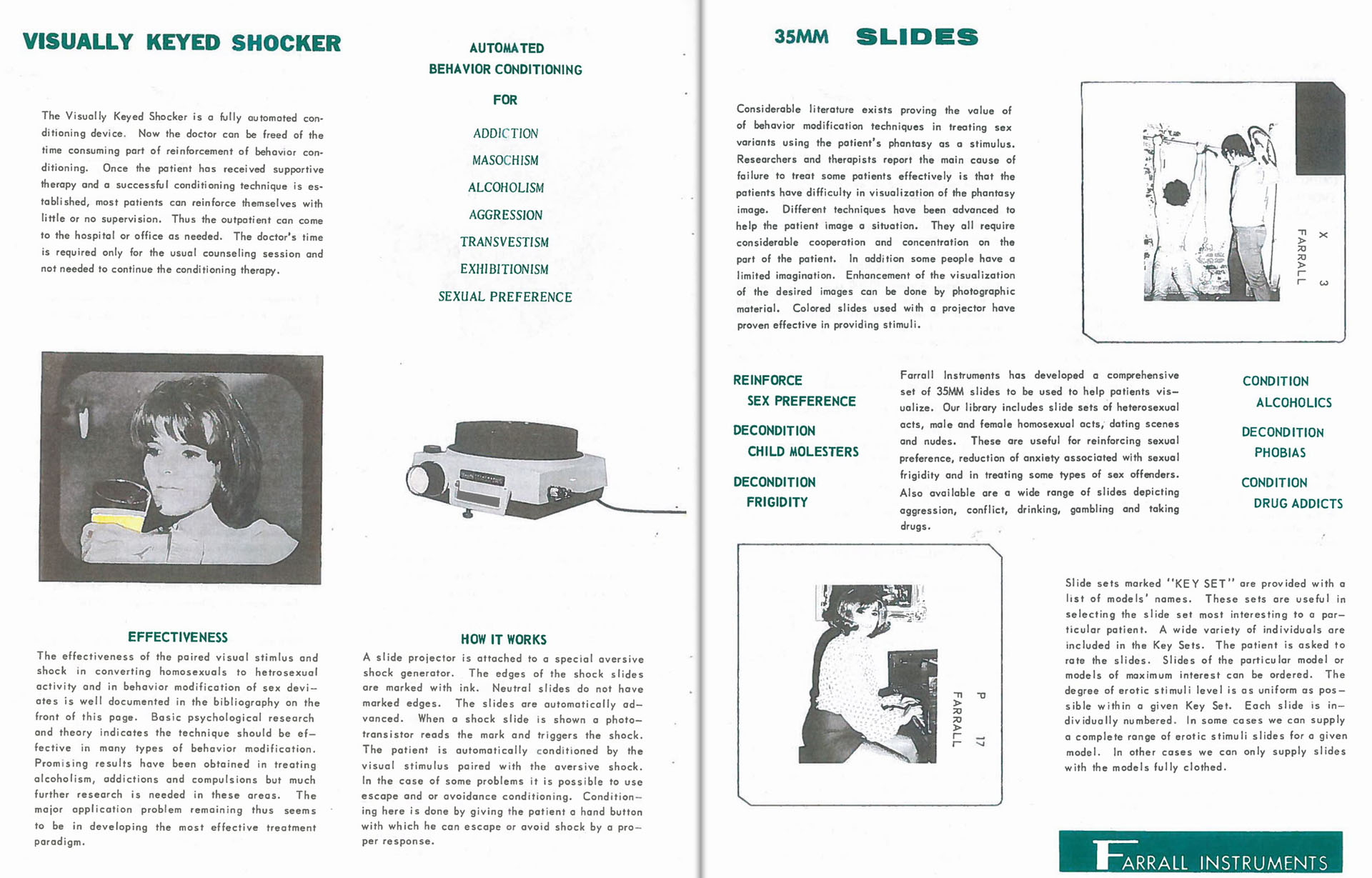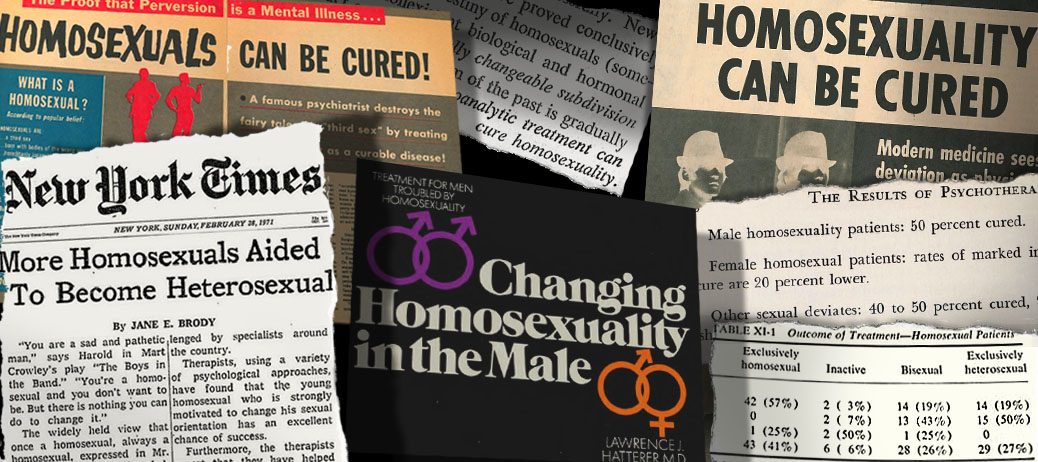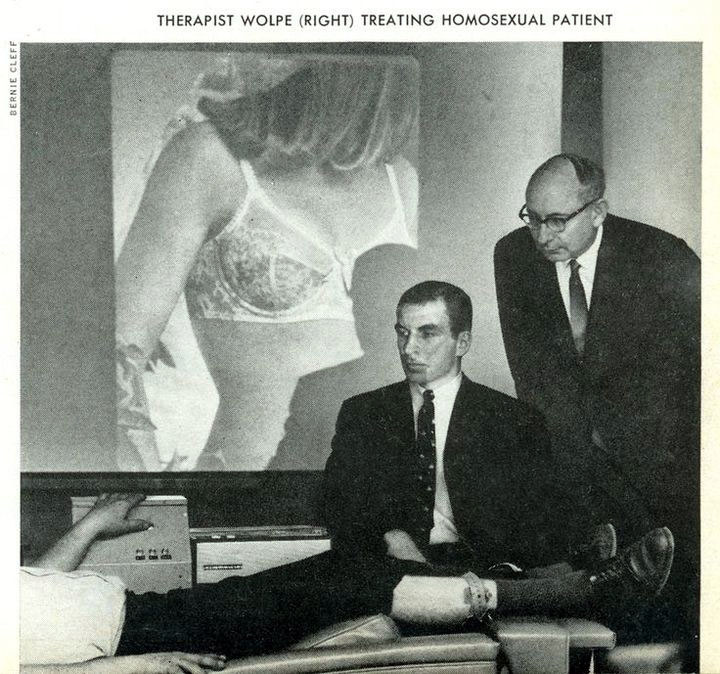Numerous cases of successful therapeutic correction of homosexual behavior and attraction are described in detail in the professional literature. Report The National Association for the Study and Therapy of Homosexuality presents an overview of empirical evidence, clinical reports and research from the end of the 19th century to the present, which convincingly prove that interested men and women can make the transition from homosexuality to heterosexuality. Before the era of political correctness, it was a well-known scientific fact, which is freely wrote the central press. Even the American Psychiatric Association, excluding syntonic homosexuality from the list of mental disorders in 1974, noted the that “Modern treatment methods allow a significant part of homosexuals who want to change their orientation to do so”.
The translation follows Articles from the New York Times of 1971.
More homosexuals were able to become heterosexual
“You are a miserable and miserable person”Says Harold in Martha Crowley’s Orchestra. - “You are homosexual, you do not want to be, but you can do nothing to change”.
The widespread belief that, having become homosexual, a person remains forever, expressed in Mr. Crowley’s drama, is constantly contested by experts throughout the country. Using a number of psychological approaches, therapists found that young homosexuals who are determined to change their sexual orientation have excellent chances of success. In addition, therapists report having helped 25 – 50% of their homosexual patients make heterosexual corrections, regardless of their age or initial motivation.
While the vast majority of homosexuals are not interested in psychiatric treatment, and most of those who apply for therapy do not want to become heterosexual, therapists report a growing number of dissatisfied homosexual men seeking to change their sexual orientation or, at least, better adapt to it.
Biologically normal
"As soon as it became known that we treat homosexuality with some success, we are literally besieged by requests for help," - noted one New York psychiatrist who writes a lot on this topic.
Dr. William Masters and Virginia Johnson, St. Louis sexuality research and treatment specialists whose results from working with homosexuals have not yet been published, report a growing number of homosexual patients being referred to them as news of their work spreads to professional circles.
Treatment approaches range from the traditional psychoanalytic method to targeted psychotherapy, group therapy, behavioral therapy, and any combination thereof. Chemical intervention yielded no results, as studies have shown that homosexuals are biologically normal men.
Doctors say their methods are equally applicable to both homosexual men and women. However, they point out that lesbians rarely seek treatment, and even when they do, they are usually not interested in changing their sexual orientation.
Homosexual men who want to become heterosexuals usually turn to therapy because of a problem directly related to their homosexuality, for example, breaking a love affair, disappointment with a homosexual lifestyle, fear of being exposed and losing a job, fear of being old and unnecessary to anyone, or desire to start a family .
Doctors treating homosexuality believe that many of those who would like and could benefit from therapy do not turn to it because of deep pessimism regarding the possibility of a change that prevails both in the public and professional consciousness.
Pessimism began to fade 8 years ago with the publication of a study by a group of psychologists who reported that 27% of 106 homosexual patients undergoing psychotherapy became exclusively heterosexual. The research team led by Dr. Irving Bieber of New York College of Medicine called them “The most optimistic and promising results so far”.
Psychologists who consider the main goal of therapy to rid the homosexual of fear of heterosexual activity, found that the transition to heterosexuality is likely to occur after 350 hours of therapy (three years or more). Of those who have undergone such treatment, almost half have reached complete heterosexual adaptation.
Behavioral Change
Later, New York Hospital psychiatrist Lawrence Hatterer said that by combining the psychoanalytic method he specializes in with some of the new behavioral therapy methods for changing habits, he "can achieve in 50 sessions what in normal psychoanalysis is achieved in 350 sessions."
In his recently published book, The Change in Homosexuality in Men, Dr. Hatterer documents his work over the past 15 years with more than 200 homosexual patients, one third of whom have made a steady heterosexual change.
Like psychoanalysts, Dr. Hatterer tries to help his patients understand the origins of their homosexual behavior by examining family relationships and childhood experiences. At the same time, he is trying to change homosexual behaviors by working with his patients to identify and avoid aspects of life that provoke homosexual episodes and replace them with heterosexual stimuli and relationships. He may, for example, suggest that the patient refuse to attend gay bars and go to regular bars instead, or replace homosexual pornography and images of men with images of women.
Dr. Hatterer also uses stored tape recordings of relevant therapy sessions that the patient listens to at home when he feels the urge to return to sexual activity that he is trying to avoid.
The doctor said that one 30-year-old patient made a complete heterosexual correction in three months of treatment. The man without the slightest heterosexual experience began therapy on the verge of suicide, having parted with the man with whom he lived for two years. “After only nine 45-minute sessions and 27 listening to the recordings, the man was engaged and maintained a successful sexual relationship with his bride several times a weekyu, ”says Dr. Hatterer.
Dr. Hatterer, Dr. Bieber, and others who have treated many homosexuals, describe the following characteristics of patients who favor heterosexual adjustment:
• Purposefulness to become heterosexual.
• Late introduction to homosexuality (late adolescence or adulthood).
• Start of therapy before 35 years.
• Any heterosexual interest or experience in the past.
• Sympathy for women, at least at the social level.
• Work and lifestyle are not dominated by constant homosexual intercourse.
However, says Dr. Hatter, some patients who have only a few of these symptoms, or even none at all, have benefited greatly from therapy. The most important aspect of treatment is to inform the patient that there is an opportunity to somehow help his problem.
Dr. Samuel Hadden, a psychiatrist from Philadelphia who 15 years ago helped develop an innovative group therapy method to re-orient homosexuals, condemns “hopeless negativity,” which he says “prevails in the minds of many psychiatrists.”
Dr. Hadden feels that he has reason to hope. Working with groups of homosexual men, he found that “Approximately one third of those who remain persistent in treatment (usually for several years) achieve effective heterosexual adaptation”and the other third is better adapted to their homosexuality.
According to him, the group approach gives patients a sense of acceptance and speeds up catharsis, as group members often have similar experiences and reactions. Each member of the group, striving for success, supports and strengthens the success of other members, and in turn, each successful member provides living proof to others that sexual reorientation can be achieved.
Group therapy of the psychoanalytic approach is a long process, so many doctors believe that if many thousands of homosexuals who can benefit from treatment ever seek help, a faster way will be needed.
Three way attack
At the University of Temple Institute of Behavioral Therapy, Dr. Joseph Walp and his colleagues attempt to treat homosexuals exclusively by modifying their reactions using behavioral methods.
Their “tripartite attack” affects the homosexual’s fear of physical contact with a woman, his attraction to men and his general interpersonal fears. For example, to eliminate fears about women, the patient enters into a state of deep relaxation, and then introduces women. To erase their sexual interest in men, patients are also exposed to such “aversive” stresses as light electric shocks while displaying images of naked men.
Since this combined behavioral approach is relatively new, Dr. Walp says he has not accumulated enough cases to compare results or evaluate their long-term effectiveness. Be that as it may, his “impression” is that “about 75%” of patients become heterosexually oriented after about six months of therapy.
Some therapists believe that some homosexuals can become heterosexual without resorting to professional help - through willpower, deep religious experience, or the adoption of a new philosophical system. However, for many homosexuals who want to change their lifestyle but cannot do it themselves, treatment can be expensive, time consuming and difficult to access.
The homosexuality study group at the National Institute of Mental Health recently called for "increased efforts to develop new treatments and increase the effectiveness of therapeutic procedures."
"Although it cannot be assumed that a significant portion of homosexuals will resort to treatment," - says the research team, - “We hope and expect that as treatment methods improve and expand, more and more people will voluntarily seek help.”
Noting that “5000 psychiatrists will be needed to help all interested homosexuals”Dr. Hatterer proposes the establishment of “psychosexual health clinics” with semi-professional staff. As the ranks of former homosexuals replenish, he envisions the development of “Anonymous Homosexuals” groups based on the principle of self-help, which will do for homosexuals what “Anonymous Alcoholics” have done for many alcoholics.
The New York Times, Feb. 28, 1971
The government, however, had other plans on this subject. In 1969, in his address to Congress, President Nixon, calling population growth "One of the most serious problems for the fate of mankind", called for urgent birth control measures. A number of scientists have proposed legalization and promotion of homosexuality as one of the methods to reduce the birth rate, and in 1974, it was depatologized. Since then, as former APA President Nicholas Cummings testifies, “APA’s gay rights movement is dominated by political correctness, not science". Dr. Cummings also сообщилthat in 1959 – 1979 years. 18 000 homosexuals turned to his clinic with various problems, of which approximately 1 600 aimed to change their sexual orientation. During therapy, many have had positive changes in their psyche, resulting in 2 400 patients becoming heterosexual.
¹ In LGBT rhetoric aimed at discrediting conversion psychotherapy, one can often hear chilling stories about how unfortunate homosexuals used to be tortured with electric shock almost in the electric chair. This blatant lie is designed to intimidate and demotivate those homosexuals who begin to look for ways to get rid of their same-sex attraction, which prevents them from leading a fulfilling life (and there are many of them). This lie can be deadly: almost all former homosexuals report that their suicidal thoughts did not arise from the hostility of the environment, but from their own self-loathing and feelings. hopelessnessbecause they were convinced that they have no way to change.

What really happened? In psychiatry, there are two types of therapy where electroshock is used: electroconvulsive и aversive... In electroconvulsive therapy, the therapeutic effect is achieved by passing an electric current with a voltage 70 – 460 volts through the patient's brain for 0.1 to 1 second. Currently, about 1 million patients a year resort to electroconvulsive therapy for the treatment of various psychiatric and neurological diseases, usually severe depression, catatonia and manic syndrome. This method, accompanied by cognitive side effects, has never been officially used to treat homosexuality.
Aversive therapy, based on the classical Pavlov conditioning, deals with the formation of aversion to unwanted stimuli at the conditioned reflex level. This method is used to voluntarily get rid of addictions (from gambling to the use of drugs), phobias, aggression, sexual dysfunctions and even writing spasm. This is achieved by associating an unwanted stimulus (cigarette, sexual fantasy, pornography, etc.) with unpleasant sensations (pain, nausea, fear, etc.). The use of electricity to create unpleasant sensations in aversive therapy has largely supplanted the use of chemicals because it is easier, more accurate to use, and lacks side effects. Electroshock produced apparatusoperating on an 9-volt battery, where the patient himself establishes a discharge level that is tolerable for him, which flows through the cuffs on the forearm or lower leg. This method was used with the consent of patients to get rid of unwanted homosexual impulses. Closer to the 70 years, behavioral therapy gained wide popularity, and aversive stun guns were sold even for home use as a means of reinforcing desirable patterns of behavior and getting rid of unwanted ones.

Limitations
Aversive therapy refers to behavioral psychotherapy, which, as its name suggests, deals only with behavior - those. external symptoms of the problem. Therefore, in solving problems based on underlying psychological factors (as in homosexuality), its effectiveness is unlikely to be long-term, since the work is not aimed at eradicating the underlying cause, but at suppressing its visible manifestations. Conditioned reflexes arise under certain conditions and disappear in their absence. Thus, to maintain a constant conditioned reflex aversion to a particular stimulus, regular reinforcement of the former is necessary. In the absence of systematic reinforcement, the extinction of the conditioned reflex will be predictable. So, research 1968 showed that as a result of aversive therapy for sexual deviations, improvement occurred in 23 out of 40 cases (57%), but when checked a year later, it turned out that full success was preserved only in 6 cases (15%). Improvement rates for transvestites, fetishists, and sadomasochists were high, less impressive for homosexuals, and very low for transsexuals. For comparison, patients who completed a course of psychodynamic therapy, remained exclusively heterosexual and twenty years later.
Aversive therapy is part of the Federal treatment standards and is used to treat a number of problems. Experts agree that the use of aversive therapy is possible and sometimes even necessary, but in order to achieve the best and most stable results, it is desirable that it be carried out together with other psychotherapeutic methods.
Extra charges:
Articles on the topic of psychotherapy of homosexuality:
https://pro-lgbt.ru/archives/category/articles/therapy



Nastoyashie.online
Program for those who want change